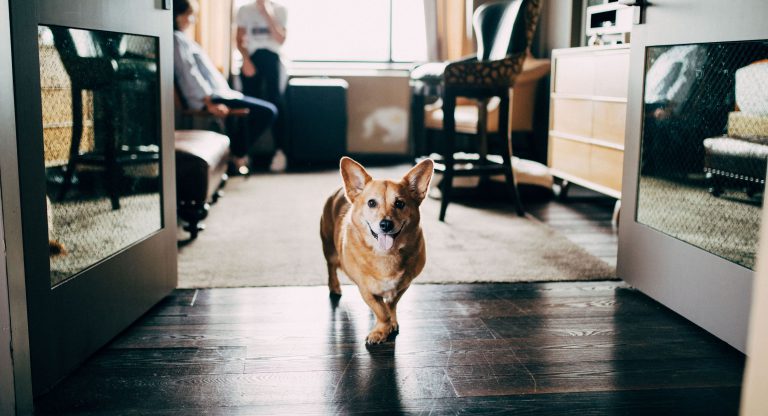There are two separate recognized corgi breeds: the Pembroke Welsh corgi and the Cardigan Welsh corgi. We’ll discuss their differences, but they have much in common: the herding dogs are smart, affectionate, and long. In fact, until the mid 1930s, the British Kennel Club considered them a single breed. Corgis have tiny legs and an infectious smile—but they’re working dogs who need a lot of physical and mental exercise. Read on if you’re trying to decide whether to bring a corgi home, or want to learn more about how to care for the one who’s already there.
Basic corgi facts
One oft-repeated explanation for the word “corgi” is that it translates to “dwarf dog” in Welsh. There may be some debate on the etymological front, but Pembroke and Cardigan Welsh corgis both have short legs and long bodies, which are useful for more than making them photogenic. The herding dogs’ shape keeps them low to the ground, where cattle are less likely to kick them. According to the American Kennel Club, female Pembrokes can weigh up to 28 pounds, while males may reach 30. They live an average of 12 to 13 years. Female Cardigans weigh 25-34 pounds, and males range from 30 to 38. The average lifespan of a Cardigan is 12 to 15 years. Corgis need ample training, and many of them learn quickly. They’re known to bond closely to their families, and thrive with plenty of play, exercise, and other enrichment.
“What are the two types of corgis?”
The AKC says that, while Pembroke and Cardigan corgis share many qualities, the two breeds actually do not share a common ancestor and hail from different parts of Wales. Here are some of the noticeable differences between the two:
Size
As noted above, Cardigans weigh more on average than Pembrokes. The compact-but-mighty Pembroke is the smallest member of the AKC’s herding group.
Coat
The AKC lists different standard colors for the two corgi breeds. The Pembroke has a short coat that may be “red,” “sable,” or “tricolor with white markings.” The Cardigan’s medium-length coat, on the other hand, can include black, “blue merle,” “brindle,” “red,” and “sable” in addition to its white areas.
Tail and ears
Cardigan corgis tend to have smaller, pointier ears than Pembrokes. Cardigans will usually keep their long, “fox-like” tails, whereas it’s common for Pembroke corgis to have their tails docked as puppies. A small number of Pembroke corgis naturally have bob tails, but the look is most often the result of docking. The American Veterinary Medical Association opposes this procedure when it’s done for a purely cosmetic purpose, and some governments ban it.
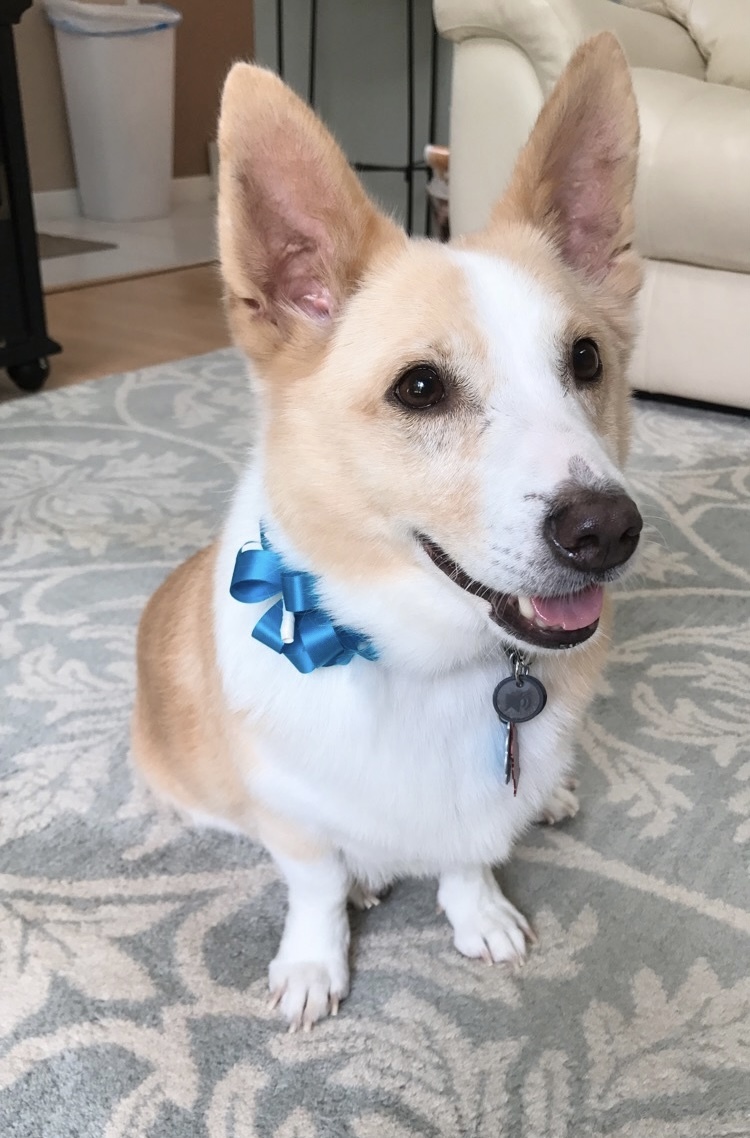
Fitz
Corgi personality
While the average personalities of the two corgi breeds are quite similar, owners perceive some differences.
“I’m finding that the Cardigan is a little more stubborn and also a bit more of the clown,” says Lisa Rabenold of East Coast Corgi Rescue. “Pembrokes can be very serious,” she says. “They’re very serious about what they’re doing. They’re very serious about going for that walk, they’re very serious when it’s time to play ball. To them, we’re not going to diverge for anything, because the ball’s what’s most important. Where the Cardigan, you’ll throw the ball, they’ll start going—and all of a sudden, you know, a squirrel goes by and they start barking at the squirrel.”
Corgis famously look “happy to be here” thanks to an infectious smile. To stay happy, they’ll require plenty of exercise. A working dog needs a job to do. Both types of corgis love spending time with their people and burning off energy through play.
Even if they don’t work on a farm, many corgis will display herding behavior. Deborah Levy, who owns Rowdy, says “he’s particularly concerned when his ‘herd’ (my husband and I) are not in the same room together. If my husband and I are apart, he’ll calculate the exact point between us and lie there so he can keep an eye on both of us.” This is a theme among corgi owners. Dickey Richardson tells the following story from his time in Montana, about his two corgis named Otto and Wobble:
“Neither Otto nor Wobble ever received training to herd and corral cattle, but both did so by instinct. One day a huge Black Angus bull broke down a fence and invaded our south field. At this time, Wobble was very little—about 16 weeks old. You would have imagined he was a 16-year-old, fully trained herding dog. He and Otto drove the 1,000-pound bull back into his pasture.”
Many corgis also like to stick to a schedule. Molly Mulcahy, loyal human to a corgi named Reesa, says of her pup: “Each morning she’s anxious to lead me into the living room to enjoy my coffee; and at the same time each night, she needs everyone to get into the same room to relax and unwind.”
And, while virtually any dog will bark sometimes, both Pembroke and Cardigan corgis have earned a reputation for being especially vocal—so know that if you make one a part of your family, you may have less quiet time than you’re used to.
All dogs are individuals, so you shouldn’t expect your Pembroke or Cardigan to conform to any preconceived notions of what their breed is like. There are some common experiences among corgi owners, but be ready to love and take care of the specific dog you have.
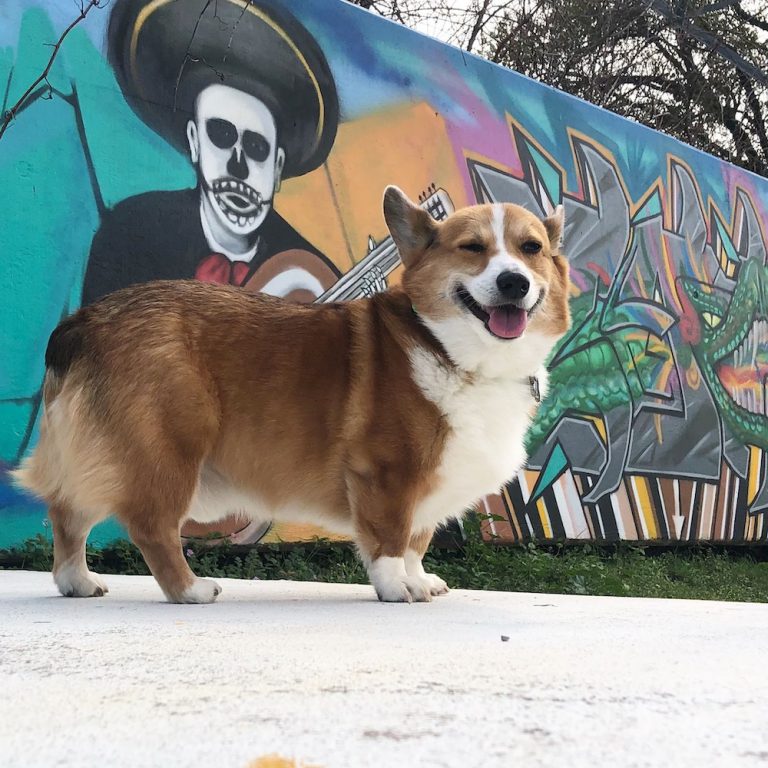
Moose
“Should I get a corgi?”
Corgis’ powerful combination of energy and smarts can achieve great things, but owners must provide exercise and enrichment so they don’t end up directed toward destructive ends.
Rabenold warns that corgis’ close-to-the-ground stature can be misleading: Despite their tiny legs, she says, “They are not a small dog.” While corgis demand a lot of exercise and training, there’s a positive side to those requirements. For “somebody who wants a German shepherd but doesn’t really have the space,” she says, “a corgi can fill that need.”
Melissa Terzis, founder and executive director of East Coast Corgi Rescue, says that families with kids need to prepare all of their members for a positive relationship with their new pet. “There are parents who will write and say ‘I grew up with corgis. My kids have always had corgis. They’re used to it. They respect their space,’” she says, discussing adoption applications. “That’s totally different than ‘my kids are really excited and have been following corgi Instagram accounts.’”
For corgi loyalists, there’s no better dog. Rabenold sings their praises as good dogs for owners who want to be more active. Thanks to their high energy and a tendency to want a routine, she says, corgis are “the best personal trainers you could ever have.”
Terzis remembers her husband, at one time a corgi novice, marveling that “you talk to them in complete sentences and they get it.” And, she adds: “I love the fact that it was like a big dog, but I could leave a plate of cookies on the kitchen counter and they can’t get it.”
Corgi breed history
Corgis have a creation myth; according to Welsh legend, fairies used to ride the low, long dogs into battle. The AKC says that the tale is specific to the Pembroke Welsh corgi. And, as myths go, this one may be on the newer side. Internet sleuths believe it may have first been advanced by Anne G. Biddlecomb—a Pembroke Welsh corgi breeder. The year? 1946.
According to the AKC, the Cardigan is the older of the two recognized corgi breeds, having come to Wales around 1200 BC. Pembrokes, the new kids on the block, arrived in 1107 AD when Flemish weavers moved to Wales and brought their herding dogs along.
Today’s notable corgi fans include a Queen, Elizabeth II of England—who has owned dozens of Pembroke Welsh corgis and dachshund-corgi mixes—and a King, horror author Stephen, who often calls his corgi, Molly, “The Thing of Evil” in Twitter posts.
Queen Elizabeth bred 14 generations of Pembrokes, starting with one she received in the 1940s when she was a teenager. The British Kennel Club credits her—and, more recently, the series The Crown—with popularizing the breed.
One well-known fictional corgi is Cheddar, the devoted companion of Captain Ray Holt and Kevin Cozner in Brooklyn Nine-Nine. True to his breed, he’s full of pep and has at least 14,000 Instagram followers. Another is Ein, the super-intelligent dog on the animated show Cowboy Bebop. A new live-action version has cast a real-life corgi to fill the role.
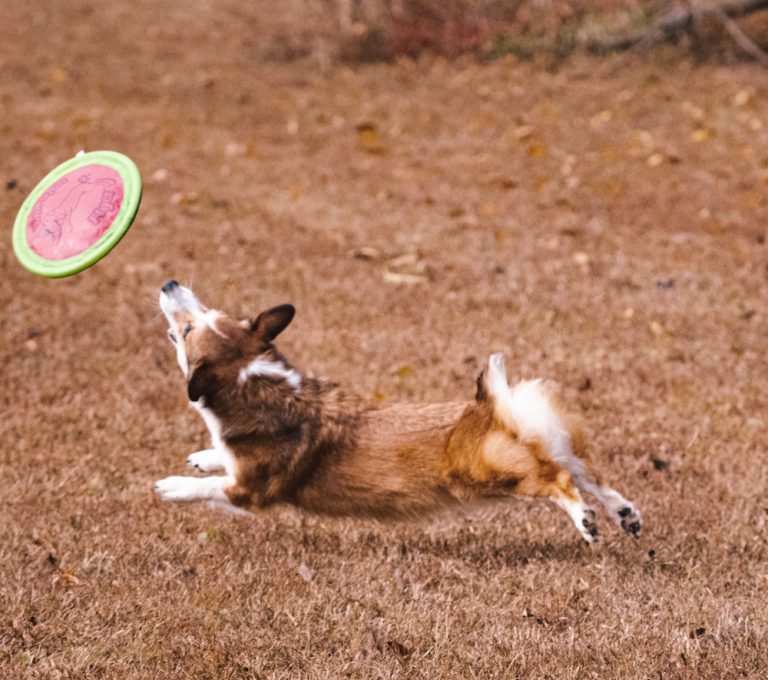
Rizzo
Corgi training
When a dog is as charming as a corgi, it may be tempting to let them do whatever they want all the time—but it’s not a good idea. Says Rabenold of the dangers of an overindulged corgi puppy, “people need to realize that things that they think are cute behaviors in a young dog become nuisances and potentially dangerous behaviors as they get older.” Fortunately, corgis are very trainable.
Like any other dog, corgis can benefit from crate training, socialization, and instruction in basic commands.
Finding an appropriate activity can be a good way to build your bond with your corgi and keep their minds and bodies active. Corgis have proven adept at obedience, agility, barn hunt, and, of course, herding, among other pursuits. Whatever you try, make sure your dog enjoys it—not every dog is the same, and many corgi owners will tell you that sometimes, for whatever reason, their pup doesn’t take to a certain activity. Chances are, if you try enough options, you’ll find something your dog loves to do. At home, food puzzles can engage corgis’ minds during meal times.
“Their minds are constantly looking for something to do,” says Rabenold, “and being in an apartment while you’re at work is not a place where a corgi needs to be—because they will eat your house. Absolutely, they will find something to do. And it might not be what you want them to do.” She says that, in the vast majority of cases, dogs that come to East Coast Corgi Rescue with behavioral issues improve when their new owners dedicate themselves to training.
Corgis can be independent thinkers, so you may have to get into their minds a bit and discover what motivates them. Tammy Lam owns a corgi named Shayla who herded goats on a farm before being adopted by her new human. Says Lam: “Because they are smart, they are very trainable—especially with treats—but they will give you some sass, and are not always obedient.”
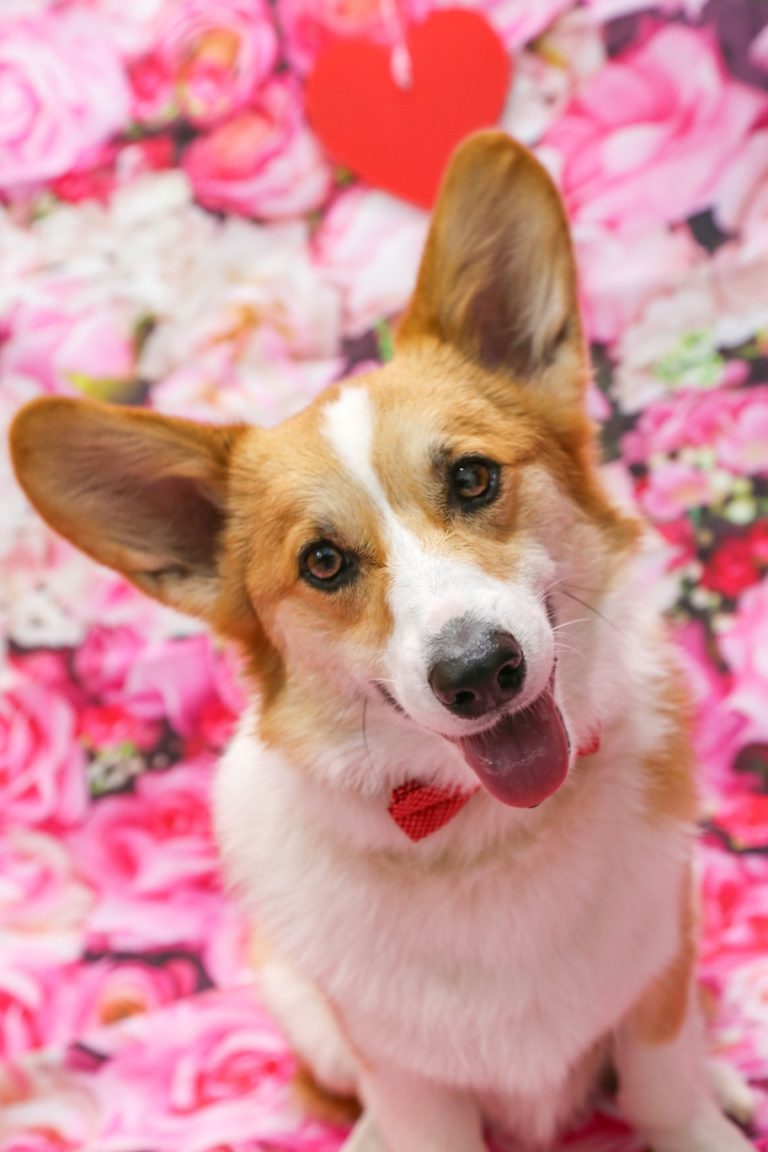
Gus
Healthy lifestyle for corgis
Exercise
According to the AKC, the first dog to ever win agility’s “triple crown”—three national championships in one year—was a Pembroke Welsh corgi named Becky, who did so in 1997. Your corgi doesn’t need to compete for trophies, but they’re likely to enjoy life a lot more if they have daily opportunities to play hard. Some corgis pack a lot of energy into a small frame. Lynne Saucedo, who owns a corgi named Korra, says that her dog “can play all day with her doggie friends and still want to play [more] while everyone takes a nap.”
Patrick Powers, who owns Zoey, says that she has “adopted” a full-size soccer ball, and “would rather play soccer than eat or drink.” Corgis’ athleticism might come as a surprise if you know them primarily as social-media floofballs, but it makes sense considering their historic role as herders. Rabenold says that herding instincts make some corgis especially enthusiastic about fetch. “You’re throwing a ball away,” she says, “and to them, they’re seeing that as something that has to come back to you. ‘It’s running away. I have to bring it back.’”
The bottom line, per Mulcahy, is that corgis “need lots of activity to let their energy out, or you’ll end up with lots of chewed -up pillows, shoes, remotes, etc.”
While corgis can run, they have short legs—so make sure you’re not going too fast and far for them. They need to have a generous supply of water to stay hydrated. And because corgis’ long spines make them vulnerable to Intervertebral Disc Disease (IVDD)—a condition that can lead to severe consequences including paralysis—you shouldn’t let them jump off of furniture. There’s more information about IVDD below, in the “Common corgi health problems” section.
Grooming and bathing
Corgis shed a lot. Even some corgi owners who thought they knew this will tell you that they were not fully prepared for the deluge of dog hair deposited daily. Nancy Connell, who owns corgi Theo, stresses the importance of “investing in a really good vacuum.” Expressing a common sentiment, Rod Marin—the owner of a corgi named Poppi—says that “We had heard about corgi shedding, but didn’t realize it would really be a full time job in terms of upkeep.”
Of the two corgi breeds, the Pembroke tends to leave more hair everywhere, and will likely require daily brushing. Once a week should be enough for the Cardigan. While you should keep up with brushing, don’t shave the undercoat in summer—it helps your corgi stay at a comfortable temperature year round, including keeping cool in the warmer months.
Corgis’ nails should be trimmed from time to time to avoid discomfort and pain—you’ll probably have to do so less frequently if yours regularly walks on sidewalks. When you do trim your corgi’s nails, stop before cutting the quick, which hurts dogs and causes bleeding. If you aren’t sure how best to go about nail trimming, ask your vet to demonstrate or have a trusted groomer take on the task.
As far as bathing, you should aim for no more than once a month under normal circumstances. You can bathe your dog less frequently if they look and smell clean. If they roll around in the mud, for example, it’s time to clean them! Use a dog shampoo and not the human stuff, which is likely to contain ingredients not suitable for your canine pal.
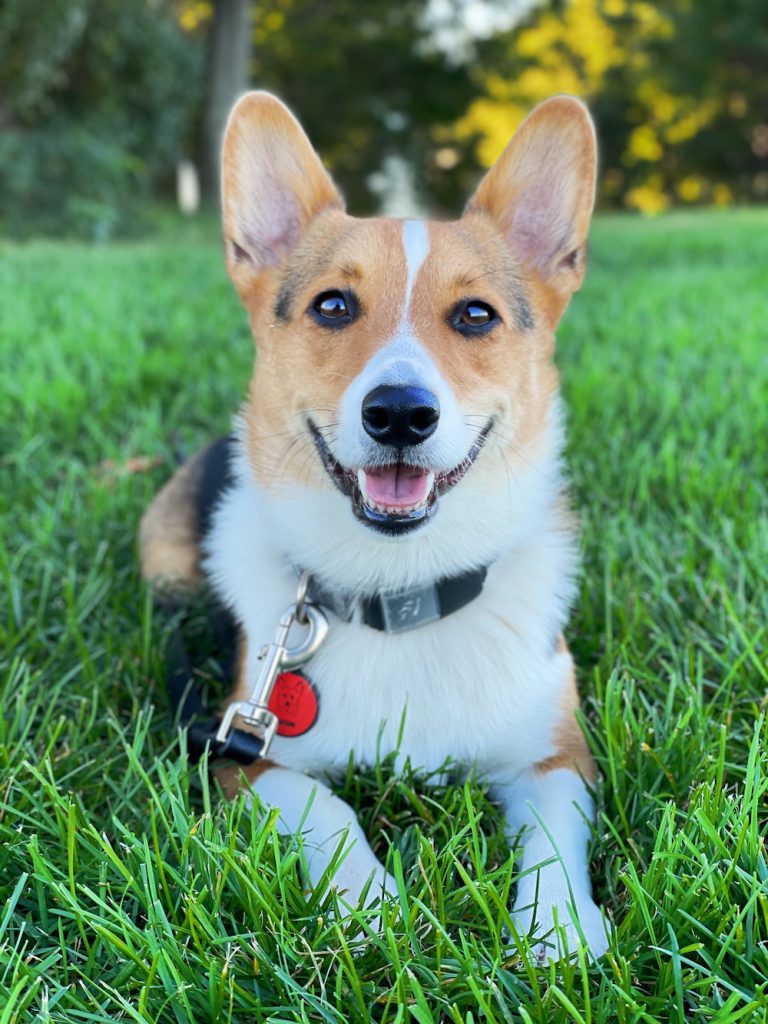
Watson
Common corgi health problems
Cardigan Welsh corgis and Pembroke Welsh corgis are typically healthy and relatively long-lived breeds, with average life expectancies of 12-15 and 12-13 years, respectively. But they are predisposed to certain conditions. Being vigilant about these can help improve the length and quality of your corgi’s life.
Degenerative myelopathy: Pembroke and Cardigan corgis are both at risk of this disease, which is similar to the human ailment amyotrophic lateral sclerosis (ALS). Dogs with degenerative myelopathy can experience weakness and eventually paralysis of the hind limbs as their spinal cords deteriorate. Early symptoms may include dragging knuckles, falling over easily, and difficulty standing up after lying down.
Rabenold, who has had a corgi with degenerative myelopathy, says that the condition can be particularly devastating because, while an impacted dog’s body cannot move as it once did, “their mind still wants to play.” While treatment can improve a dog’s quality of life, there is no cure for degenerative myelopathy. Genetic testing is now available—if you’re planning to get a corgi, ask whether yours has been tested for the condition.
Von Willebrand disease: Dogs with this inherited disorder don’t have enough of a protein that helps blood clot, and the Cornell University College of Veterinary Medicine lists Pembroke Welsh Corgis among the breeds with a high prevalence. While some dogs with VWD will not show symptoms, others may bruise or bleed excessively. Injuries and surgeries are particularly dangerous for dogs with this issue. Knowing that a dog has VWD will impact how vets treat injuries, which medications they prescribe, and their approach to surgical procedures.
Dental problems: Corgis may experience periodontal disease. Because this often impacts the roots of their teeth, a vet may need to perform X-rays to detect it. Be sure that your vet regularly examines your dog’s teeth during checkups, get professional cleanings if necessary, and institute a daily toothbrushing routine at home.
Progressive retinal atrophy: This is a genetic disease that causes degeneration of the retina and leads to blindness. It can occur in any dog, but corgis may suffer a greater incidence. There is no effective treatment.
Obesity: Excess weight is a major health concern for corgis, and is linked to conditions including IVDD, hip dysplasia, diabetes, and cancer. Monitor your corgi’s body condition, give them enough exercise, feed them an appropriate amount of fresh, healthy food, and consult with your veterinarian if you have questions about their size.
Intervertebral disc disease (IVDD): IVDD is a degenerative disease impacting dogs’ spines, and the shape of corgis’ bodies makes the more vulnerable than most breeds. Extra weight puts more strain on the spine, making herniated discs more likely. Signs of IVDD include dragging or weakness of the hind limbs, refusal or reluctance to move around, a hunched back or neck, or crying out in pain. If you notice any of these symptoms, bring your dog to the vet immediately—prompt treatment can make a huge difference in their prognosis.
Hip dysplasia: This is a condition in which the ball and socket of the hip joint do not fit together properly, which could lead to arthritis or degenerative joint disease. Because hip dysplasia can cause your dog pain or cost them the use of the impacted joint, it’s important that your vet pays close attention to your corgi’s hips during checkups. If you notice symptoms like a newly limited range of motion, diminished willingness to move around, hopping, pain, or limping, have a vet check your dog out.
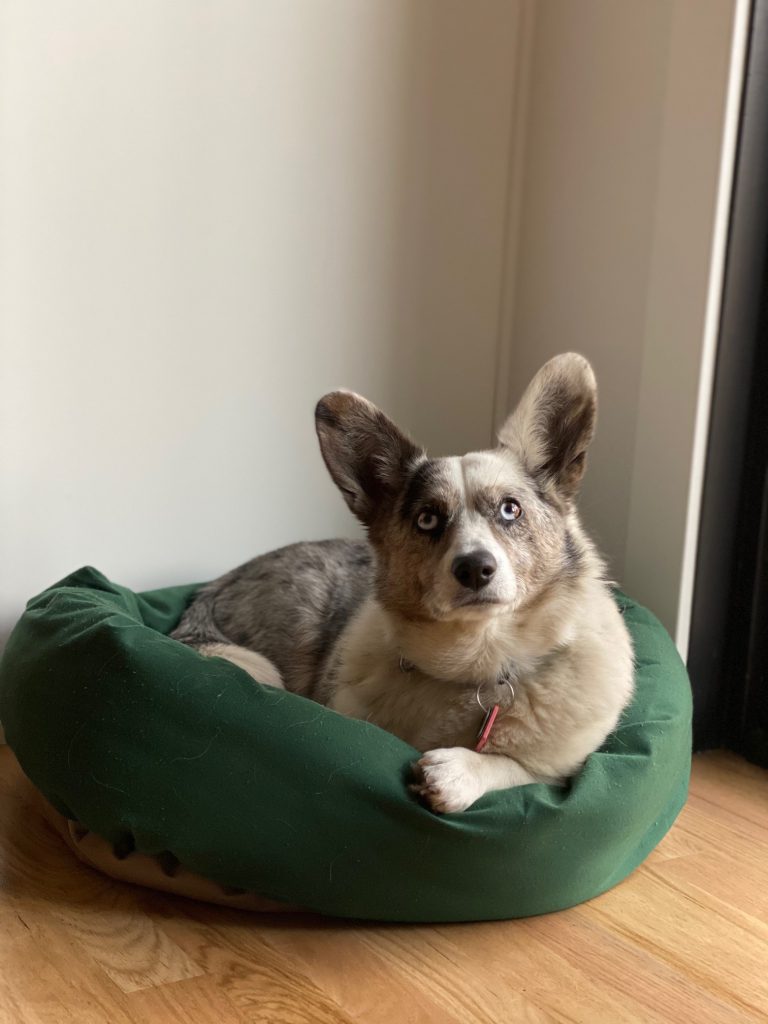
Waddles
Food and nutrition for corgis
Like all dogs, corgis will do best with a healthy diet of complete and balanced food, fed on a regular schedule. Here are a couple of corgi-specific considerations:
Watch their weight: Food-motivated. Cute. Clever. The corgi has the motive and the means to get more than their fair share of food, but it’s in their best interest for you to feed them enough to maintain a healthy weight and give them energy for their daily activities—but not more than that. Excess weight can increase a dog’s risk of ailments like diabetes and cancer, and an overweight corgi is more likely to develop IVDD due to the strain the extra pounds can put on their spine. A pre-portioned fresh-food plan can be one helpful tool as you strive to feed your corgi the right amount.|
Make a joint effort: A fresh diet that provides balanced Omega-3 fatty acids could be an asset as you seek to ward off the joint issues that are common in corgis.
A healthy diet—alongside training, vet care, and a herd that sticks together—is among the keys to a happy life for your corgi.
Where to get a corgi
If you’ve decided to get a corgi, a rescue organization like East Coast Corgi Rescue is a good place to start; there are many corgis and corgi mixes who need good homes. If you opt for a puppy, steer clear of pet stores and puppy mills—major issues with popular breeds like Pembroke and Cardigan corgis—and opt for a reputable breeder. Says Rabenold: “A reputable breeder for any breed will make someone sign a contract that they will take the dog back when the owner cannot take care of them anymore. That’s huge in the corgi world. If they don’t have somebody sign a contract that the dog will be returned at any age, walk away from it—because then there’s something fishy. They’re not standing behind their dog.”
What corgi owners say about fresh food
 Moose: “I was told by the vets that I should look into changing Moose’s diet. Moose has always been a very active dog but we’ve struggled getting him to the desired weight for corgis his age. No matter what we tried, Moose just couldn’t lose the 3 pounds he needed to in order to get to the goal weight. Once he began eating The Farmer’s Dog, we hit the goal weight in no time! I’ve also noticed that he’s more spritely on his feet, relaxes easier, sheds less, and has the most quality poops he’s had in his whole life. I have been so happy that I made the switch to The Farmer’s Dog for Moose.” —Moose’s human, Cameron Johnson
Moose: “I was told by the vets that I should look into changing Moose’s diet. Moose has always been a very active dog but we’ve struggled getting him to the desired weight for corgis his age. No matter what we tried, Moose just couldn’t lose the 3 pounds he needed to in order to get to the goal weight. Once he began eating The Farmer’s Dog, we hit the goal weight in no time! I’ve also noticed that he’s more spritely on his feet, relaxes easier, sheds less, and has the most quality poops he’s had in his whole life. I have been so happy that I made the switch to The Farmer’s Dog for Moose.” —Moose’s human, Cameron Johnson
 Bentley: “Before The Farmer’s Dog, Bentley would get bored of his food (kibble) and go on hunger strikes. Since switching to The Farmer’s Dog, he always eats and never gets bored of his food. We have also seen an increase in energy levels since switching (going on one year now). Also, less gas!” —Bentley’s human, Paula Stephenson
Bentley: “Before The Farmer’s Dog, Bentley would get bored of his food (kibble) and go on hunger strikes. Since switching to The Farmer’s Dog, he always eats and never gets bored of his food. We have also seen an increase in energy levels since switching (going on one year now). Also, less gas!” —Bentley’s human, Paula Stephenson
 Korra: “We tried all different food combinations and no matter what she ate, she would have diarrhea. We eventually heard about The Farmer’s Dog and did the initial trial—and, for the first time, her digestion was consistent and she had no issues. Her weight was also on the higher end, and switching her food helped her get to a healthier weight that was recommended by the vet. It’s also been so convenient to have it delivered straight to our door and not have to worry about running to the store when we’re low on food or if it will expire.” — Korra’s human, Lynne Saucedo
Korra: “We tried all different food combinations and no matter what she ate, she would have diarrhea. We eventually heard about The Farmer’s Dog and did the initial trial—and, for the first time, her digestion was consistent and she had no issues. Her weight was also on the higher end, and switching her food helped her get to a healthier weight that was recommended by the vet. It’s also been so convenient to have it delivered straight to our door and not have to worry about running to the store when we’re low on food or if it will expire.” — Korra’s human, Lynne Saucedo




